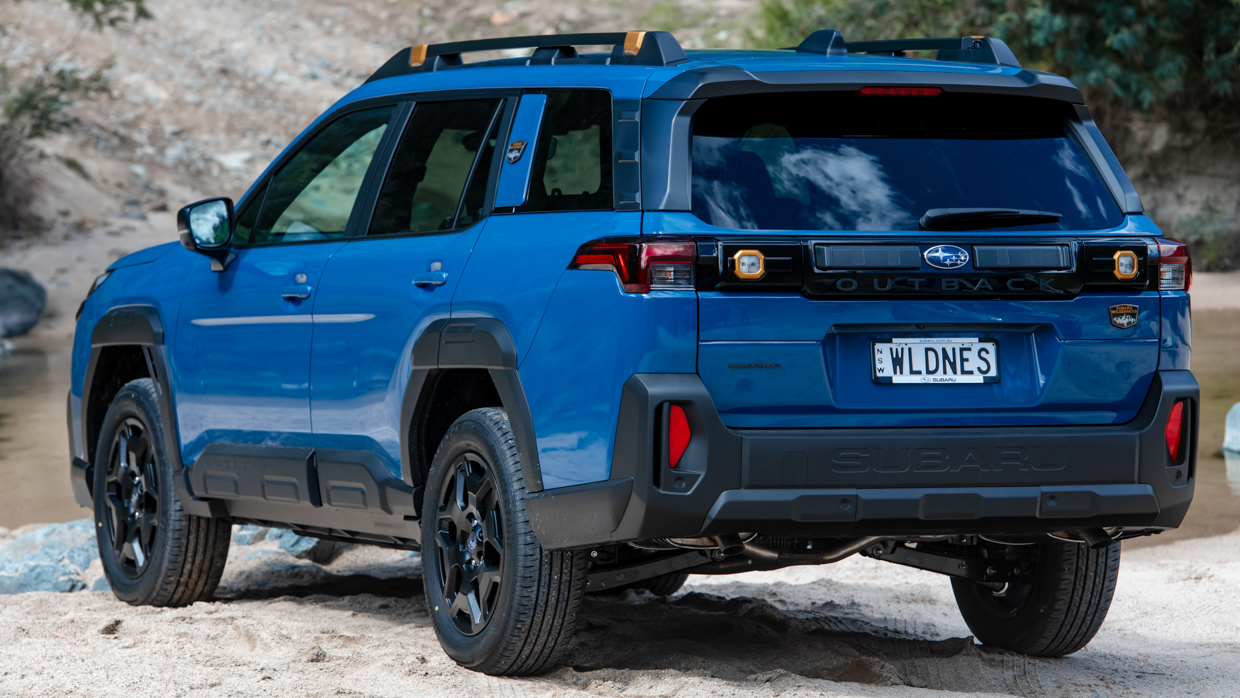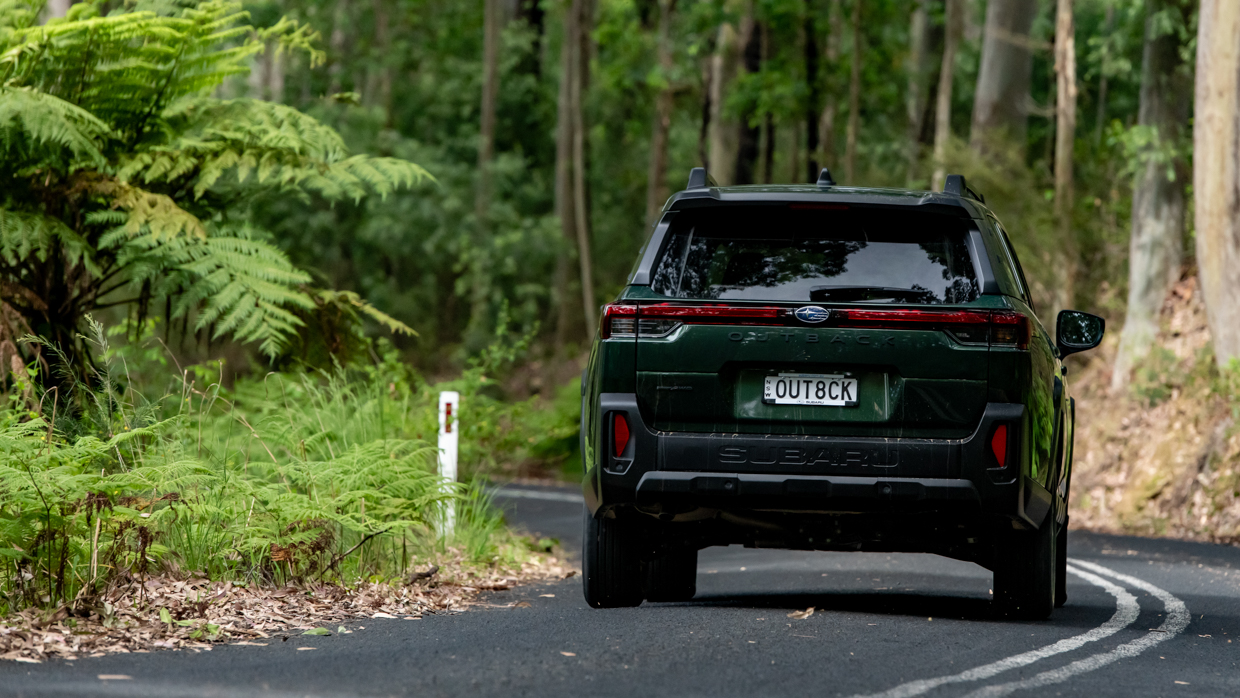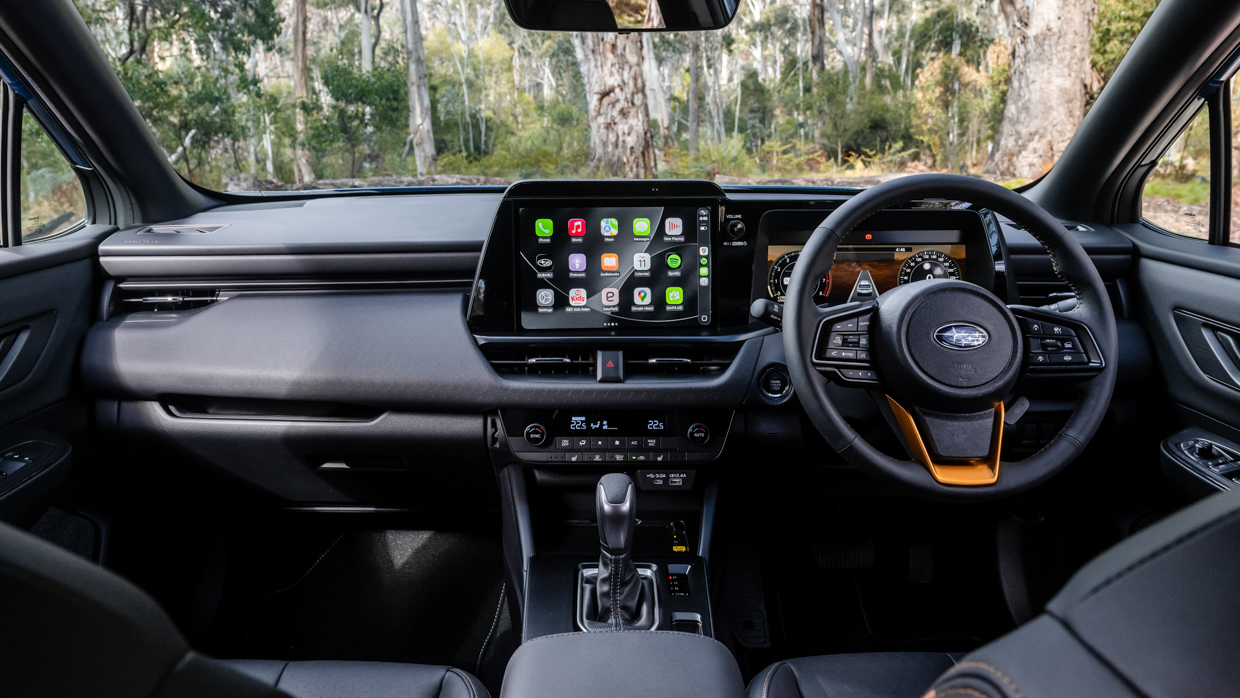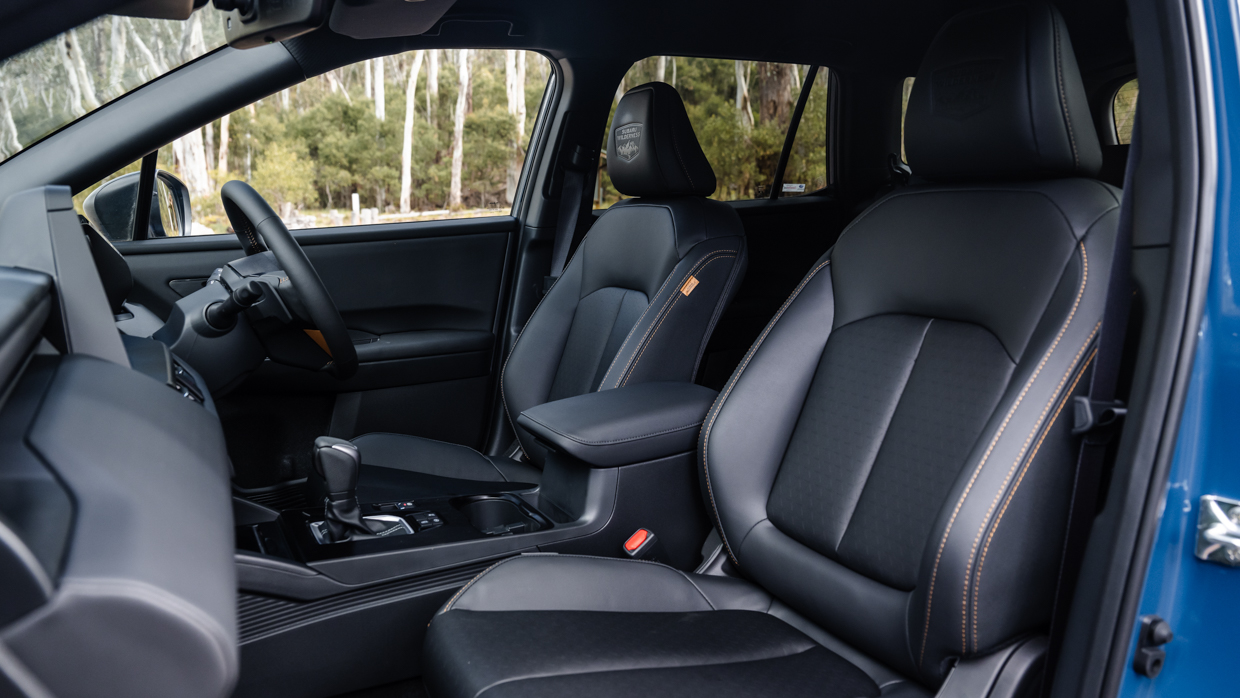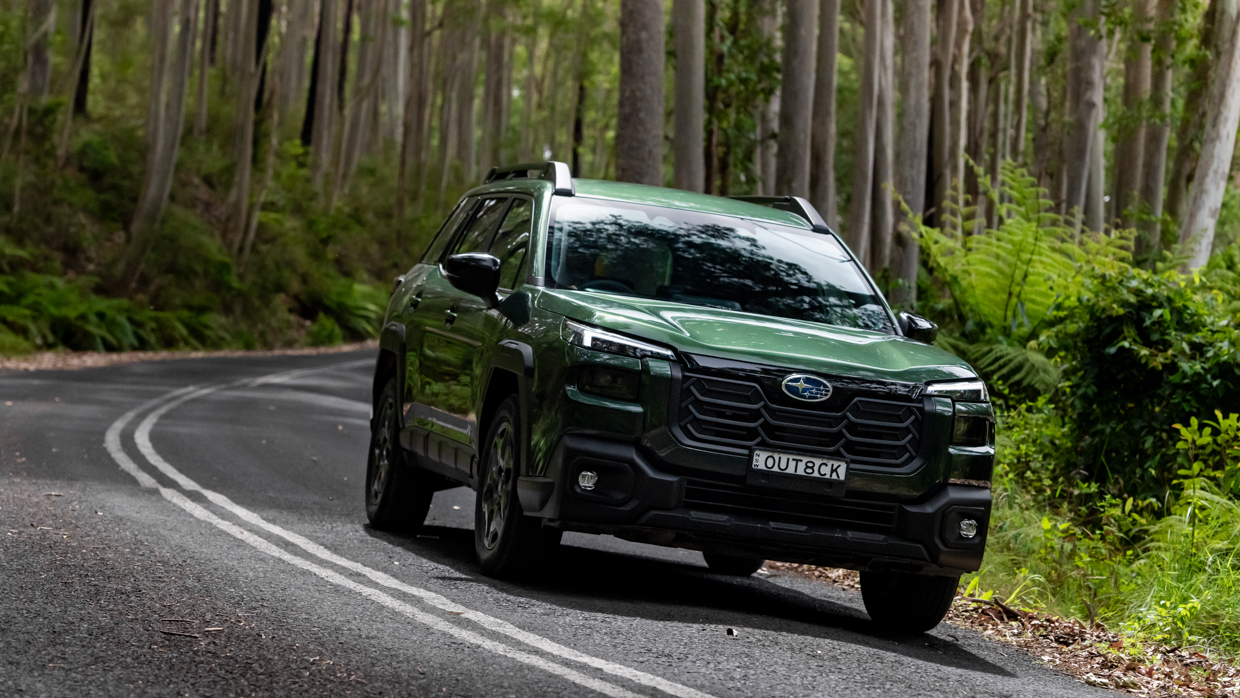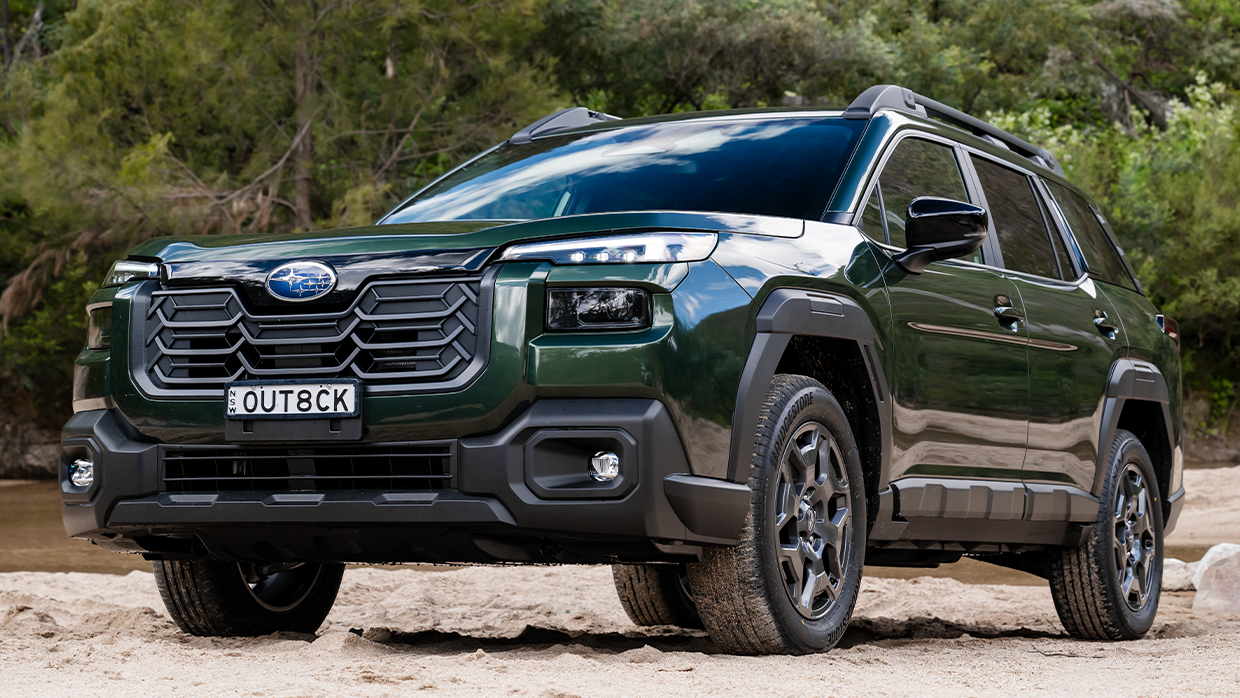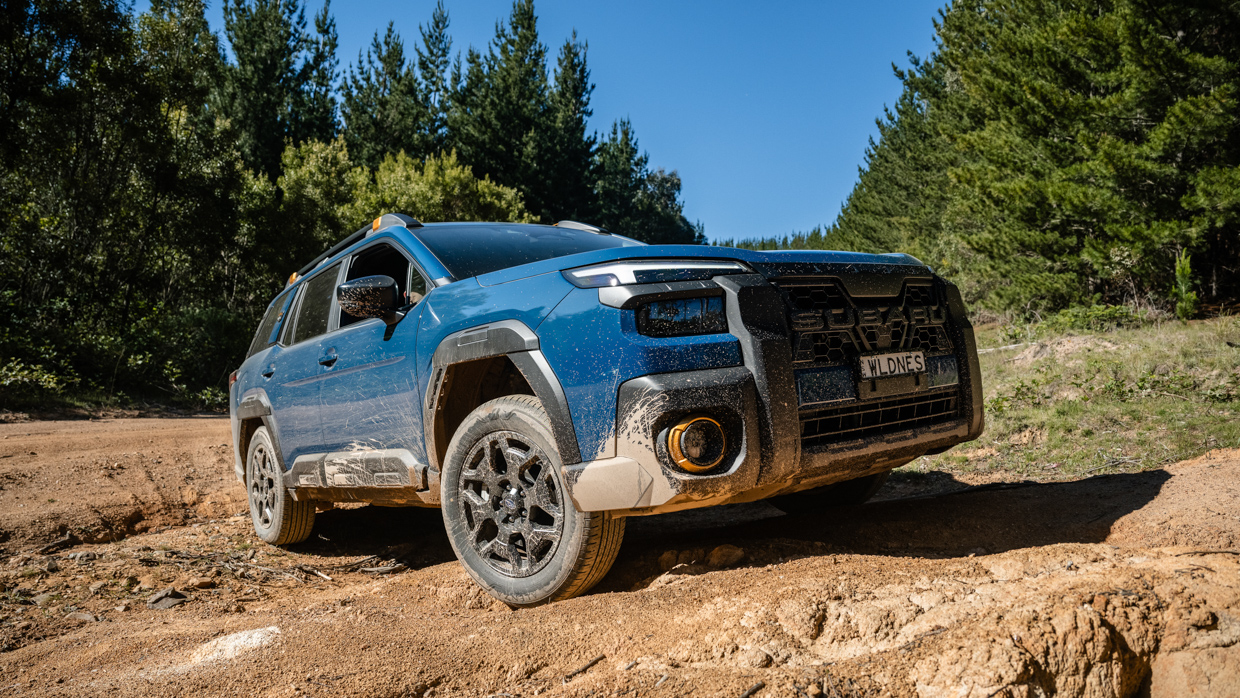-
Car Reviews
- All reviews
- Midsize SUVs
- Small cars
- Utes
- Small SUVs
- Large SUVs
- Large cars
- Sports SUVs
- Sports cars
- Vans
Latest reviews
- Car News
-
Car Comparisons
Latest comparisons
- Chasing Deals
The Outback has been radically redesigned for its seventh generation inside and out, with more grunt and practicality – but it all comes with added cost
Subaru Australia has confirmed the seventh-generation Outback will arrive in early 2026, with the long-awaited Wilderness variant leading the charge, a configuration the local importer first mooted two years ago.
The much-anticipated Wilderness enhancement – offered in regular and flagship Wilderness Apex – brings a more adventure-focused specification that exclusively pairs a raised ride height and adaptive suspension with the fitment of a 2.4-litre turbocharged four-cylinder engine.
However, the new Outback range will also offer more familiar regular variants armed with the 2.5L naturally aspirated four-cylinder engine
Price of entry for the Outback has climbed by $4800, with prices kicking off at $48,990 before on-road costs. The lineup tops out at $62,690 for the top-spec Wilderness Apex grade.
Subaru has dropped the popular Sport grade from the Outback lineup, and there is currently no word of a petrol-hybrid variant such as that offered on the Forester midsize SUV.
Outback’s biggest rethink, and a move lamented by many of the model’s fans fond of its distinctive lifted-wagon form, is that Subaru has redesigned its flagship’s shape, “reflecting the Outback’s evolution from capable crossover to a more confident, more traditional SUV”, says its maker.
While the 50mm taller cargo opening has only added an additional eight litres of space for a new capacity of 530L on paper, according to VDA testing (which measures only from the floor to the window line). As a result, greater gains might likely be experienced in the real world.
The strengthened roof now supports a static load of up to 363kg, marking a meaningful jump from the previous 318kg – in good news for roof-top tent users.
Reflecting a greater focus on tactility, Subaru has reintroduced buttons to the interior of the Outback, with functions such as the climate control no longer requiring users to interact with the touchscreen.
The aforementioned touchscreen has been flipped from vertical to horizontal perspective, now measuring 12.1 inches in size and backed by improved hardware and easier-to-navigate software, according to Subaru. It joins a 12.3-inch digital driver’s display as standard equipment.
Other standard features include heated front seats, a power-adjustable driver’s seat with lumbar support, synthetic leather trim and a power tailgate. Nappa leather, a 12-speaker Harmon Kardon sound system and heated outboard back seats are found on higher grades.
A full grade breakdown is found below.
Subaru has again beefed up the outputs of the 2.5L naturally aspirated engine, now putting out 137kW/254Nm versus the old tune of 138kW/245Nm.
The 2.4-litre turbocharged motor has stepped up to 194kW/382Nm from 183kW/350Nm.
Importantly, though, claimed fuel consumption has climbed from 7.3L/100km to 8.0L/100km in the standard 2.5-litre model, while the turbocharged option jumps from 9.0L/100km to 9.7L/100km.
While the hard-core adventure fans might gravitate towards the new Wilderness, Subaru says it has upgraded the off-road ability of all Outback grades.
This consists of revised tuning of the standard X-Mode off-road, the active torque split control unit and greater 220mm ground clearance (up from 213mm).
The lifted Wilderness steps up ground clearance to 240mm (more than a standard Ford Ranger 4×4 ute) and features approach, breakover and departure angles of 20, 21.2 and 23.6 degrees, respectively.
Other upgrades include electronically controlled adaptive dampers and more advanced versions of ‘X-Mode’ to tackle Snow and Mud. The CVT transmission also features a shorter final drive ratio to assist off-road driving.
As before, 2.5-litre equipped Outback models see braked towing capacity capped at 2000kg, but 2.4-litre turbocharged models – now available only on Wilderness grades – are now capped at 2100kg, rather than the 2400kg limit offered on the previous XT models.
Tow ball weight is capped at 200kg and 210kg, respectively.
The entry-level Outback AWD grade is fitted with the following highlight features:
Stepping up to the AWD Premium adds:
Stepping up to the AWD Touring adds:
The Outback AWD Wilderness grades are structured differently, with the following standard features over the standard Outback AWD:
Finally, the Wilderness Apex adds:
All prices listed are before on-road costs.
Latest news
About Chasing cars
Chasing Cars reviews are 100% independent.
Because we are powered by Budget Direct Insurance, we don’t receive advertising or sales revenue from car manufacturers.
We’re truly independent – giving you Australia’s best car reviews.
